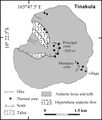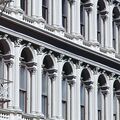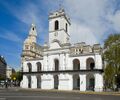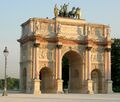Chivido Tinakulá
Chivido Tinakulá, which translates to Tinakula City in New Pacifican, is the former capital of the Tinakula International Zone and the current capital of the Republic of Tinakula. The city was founded on 27 December 2020 along with the other settlements on Tinakula Island.
Chivido Tinakulá | |
|---|---|
Capital City | |
| Country | Kingdom of Tinakula |
| Island | Tinakula Island |
| Established | 27 December 2020 |
| Founded by | Afrasiyab Jamshaid |
| Government | |
| • Mayor | Vacant |
| Dimensions | |
| • Width | 3.5 km (2.2 mi) |
| Demonym | Chivido Tinakulán |
| Time zone | GMT+11 |
Background
Tinakula Island was first sighted by Spanish explorer Alvaro de Mendaña y Niera, it's possible that Mendaña could have also caught sight of the part of Tinakula Island where Chivido Tinakulá plans to be situated.
1595 Tinakula Eruption
Mendaña discovered the Tinakula volcano when sailing to Nendö Island, the explorer spotted the volcano when it was erupting, making it the first recorded eruption in Tinakulan History.
1840 Tinakula Eruption
Tinakula used to be a habited island until 1840, when an eruption took place and pyroclastic flows swept on all sides of the Tinakula volcano, devastatingly killing all of its inhabitants. This is worst recorded eruption to take place in Tinakulan History.
1971 Tinakula Eruption
In 1951, Polynesian Outliers from Nukapu and Nupani settled on Tinakula Island, the population there reached a peak of 130, however in 6 September 1971 an eruption took place which triggered pyroclastic flows to sweep across both west and east sides of the volcano, a tsunami was triggered 30 minutes later, followed by another one a day later. This event lasted from September to December. The village of Temateneni was on the South East coast of the island. In the 1980s two families fewer than 10 people, from Nupani attempted to make another settlement there.
Overview
Eruptions which affect all parts of the volcano tend to happen once around 130 years, however little is known about the volcano so that can not be made certain. Other eruptions in Tinakula tend to effect the western part of the Tinakula volcano, and has been labeled the uninhabitable part by the Tinakula International Zone since 26–7 December 2020.
Tinakula Volcano
The Tinakula volcano is very similar to the Stromboli volcano in Italy. It is 851 metres tall, and 3 km below the surface making it nearly as tall as many Alpine Mountains. The cone of Mendaña is located on the SE part of the volcano, named after the explorer.
The summit of the Tinakula volcano ejects glowing bombs which land and slide down on the SW part of the volcano. Eruptions in Tinakula happen multiple times a decade however they only effect the western part of the volcano, excluding the 1971 and 1840 eruptions. Ashes lands all over the volcano, mainly on the western part.
-
Geographic Map of Tinakula Island
-
Mid-Close View of Tinakula Volcano
-
Glowing bombs being ejected from Tinakula Volcano
-
An eruption in Tinakula
Tinakula Island Development
Tinakula Island is the capital state of the nation and plans to be visited at 2024 and then first developed at 2029-30. Tinakula Island is the Tinakula International Zone's main priority and will be the island developed first. Multiple buildings especially the larger ones are currently planned to be made out of white cast-iron, white cast-iron has a melting point of approximately 1200 °C which can withstand lava temperatures which are between 700-1200 °C as well as pyroclastic flows which are between 200-700 °C which are a much bigger threat in most of the volcano, the iron cast buildings should as be able to stand tsunamis, this will make the buildings prepared for a around once in around 130 years volcanic eruption. More research is being put into settling on the Tinakula volcano. The outer surface of erupting lava cools incredibly quickly (by hundreds of degrees per second) when it is first exposed to air. Yellow lava represents a temperature of 1,000-1,200 °C, Orange lava represents a temperature of 800 °C-1,000 °C and Red lava represents a temperature of 600-800 °C.
Multiple buildings made of stilt will also be built on Tinakula Island, however, they will be built at the coast, they will be built to reserve local culture and to live a local experience and will be cheaper to build. 3D will also be tried out as well.
White Iron-Cast Buildings for inspiration
-
E.V. Haughwout Building, New York City
-
Same building close up
-
Capitol Building, Washington D.C
-
Spa Colonnade, Mariánské Lázně, Czechia
Non Iron-Cast Buildings for inspiration
-
Mid-Distant view of Paris
-
Marble building in Buenos Aires
-
Streetview of Paris (Carbondale Office)
-
Museo Histórico Nacional del Cabildo y la Revolución de Mayo, Buenos Aires
-
Plaza del Congreso, Buenos Aires
-
Arc de Triomphe du Carrousel, Paris












